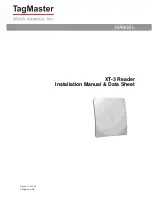
Chapter 1
Installing and Configuring the SCXI-1126
©
National Instruments Corporation
1-3
The SCXI-1126 consists of eight isolated frequency input channels, each
with software-programmable frequency ranges of 0–250 Hz, 0–500 Hz,
0–1 kHz, 0–2 kHz, 0–4 kHz, 0–8 kHz, 0–16 kHz, 0–32 kHz, 0–64 kHz,
and 0–128 kHz. Each channel has its own software-programmable input
threshold and hysteresis with a voltage range of –0.5 to 4.5 V. In addition,
each channel also has a 4-pole, lowpass output filter with
software-programmable cutoffs of 1 Hz, 40 Hz, 320 Hz, and 1 kHz.
The SCXI-1126 also has a digital section for automatic control of channel
scanning, frequency range selection, filter selection, and input threshold
and hysteresis level setting.
Channel-to-Channel Isolated Analog Input Stage
The input stage of each channel is isolated from the other channels and
from the chassis, up to 250 V
rms
. Each channel is also protected from input
overvoltages, up to 250 V
rms
powered on or off.
This stage consists of a trigger circuit that compares the input waveform to
a user-programmed threshold and hysteresis. The programmable range of
the threshold is –0.5 to 4.48 V, and the programmable range of the
hysteresis is 0 to 4.98 V. You can extend these ranges by using an attenuator
terminal block. For example, the SCXI-1327 100:1 high-voltage attenuator
terminal block extends the threshold range from –50 to 250 V, and the
hysteresis range from 0 to 250 V. The threshold and hysteresis are
programmed to create a window with the upper and lower limits given by
the formula:
where (
V
threshold
–
V
hysteresis
) must be greater than –0.5 V.
Note
If you are using Traditional NI-DAQ, the formula is
V
window
=
V
threshold
±0.5
V
hysteresis
.
When the input waveform crosses through this window, a trigger occurs.
The frequency of these triggers establishes the frequency to be converted
by the frequency-to-voltage conversion stage.
V
window
(
V
threshold
V
hysteresis
) to
V
threshold
–
=










































